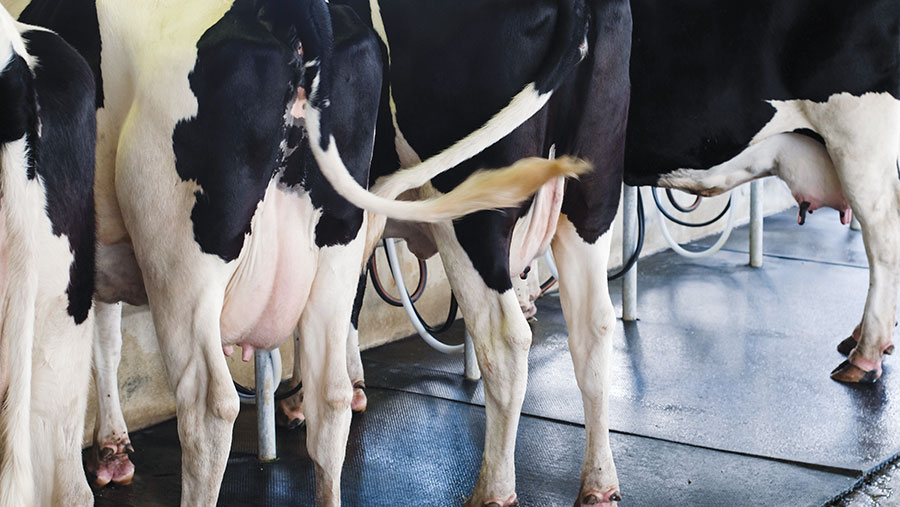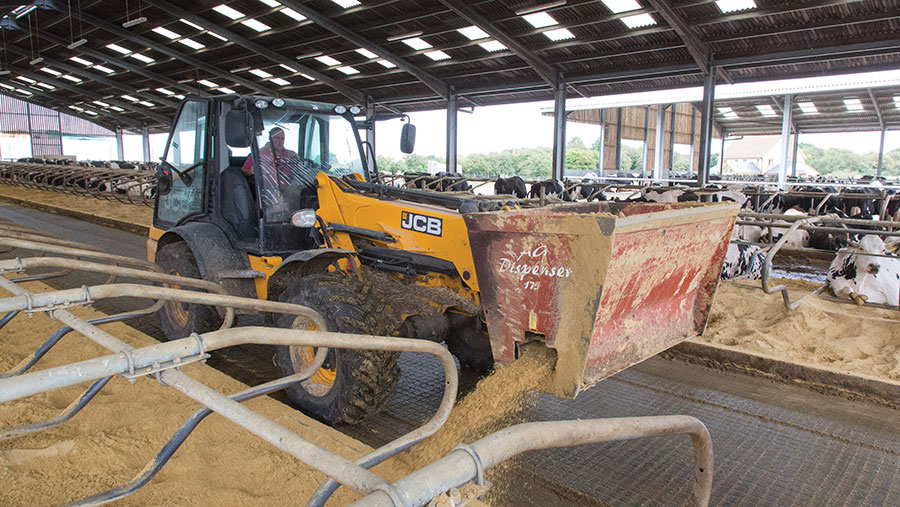3 steps to reduce mastitis risk in dairy cows at housing
 © HarryKiiM/Adobe Stock
© HarryKiiM/Adobe Stock Winter housing can increase mastitis by heightening the risk of environmental infections. Vet James Breen explains what data to monitor and measure, what targets to aim for and how to reduce risk at winter housing, depending on your calving period.
Your calving bias will determine which areas you need to focus on at winter. For example:
- Spring-calving herds will be drying off, so they will need to pay attention to dry cow housing
- Autumn-calving herds should now have most of the herd in lactation, so they will need to look at milkers’ accommodation
- Year-round calvers will need to balance both.
This is why it is so important to assess data. Together with their vets, farmers should monitor infection rates and assess the data to identify their highest-risk periods.
See also: How to dry off cows to treat mastitis successfully
Mr Breen, who specialises in cattle health and reproduction, gives the following advice:
1. Monitor mastitis in your herd
Assess cell count data from milk recordings to pinpoint:
- New infections and when they occur to establish a pattern (these are cows with a somatic cell count of more than 200,000/ml)
- First cases of clinical mastitis in lactation and when they occur. For example, if a cow has clinical mastitis within one month of calving, she probably got infected in the dry period, so capturing this data is key to knowing where to focus your efforts.
If you carry out milk recording infrequently – for example, four to six times a year as opposed to monthly, carefully consider the timings of these so it doesn’t become a barrier to identifying infection risks.
For example, if your herd calves in spring, carry out milk recording in the run-up to drying off in September, October and November to inform your strategy.
And then record at the beginning of calving to monitor as many fresh cows (less than one month in milk) as you can, to pick up first cases in lactation.
2. Targets to aim for
- Less than 10% of cows dried off with a low cell count should calve and record cell counts of more than 200,000/ml.
- No more than one in 12 cows should be infected in their first 30 days after calving.
3. Improve housing management
There are three key principles when it comes to control of mastitis at housing:
Space
- Loose housing Provide 1.25sq m of space per 1,000 litres
- Cubicles The target is to have more cubicles than cows in early lactation
- Consider if you are providing enough additional space, such as loafing area, which can be outside. Living space is the extra room above the baseline requirements for feeding and lying. Use the herd health calculator to work out how much space you provide.
The target is to provide 3sq m of loafing space a cow. If you can’t provide this, consider giving them access to outdoor areas such as the collecting yard.

© Tim Scrivener
Ventilation
You need outlets and inlets to create the “stack effect”, which means as air rises, it exits through the roof and fresh air is drawn in from the sides of buildings.
Ensure you have an open ridge in the roof to allow stale air to exit. If you have a capped ridge, lift it up. There is much more moisture trying to get out than might fall in, even in loose yards.
Don’t be afraid to remove closed ridges. Without that “chimney”, the warm air can’t escape and fresh air isn’t drawn into the building.
Bedding management
Bedding must be kept clean. Sand should be topped up at least twice weekly.
If spring-calving dry cows are kept outdoors, the golden rule is that they shouldn’t spend more than two weeks in the same area, or else pathogens will build up.
If cows are on loose yards, they should be scraped out daily to prevent muck contaminating straw beds, and cleaned out monthly – or more frequently in the face of a challenge.
